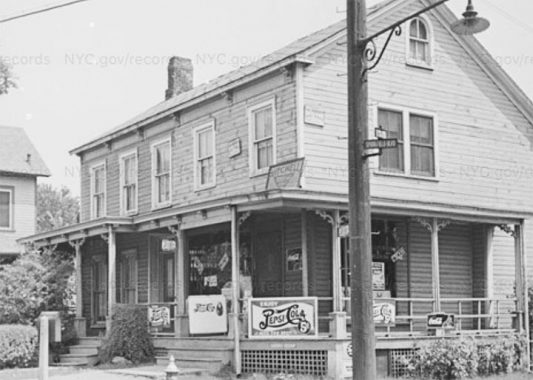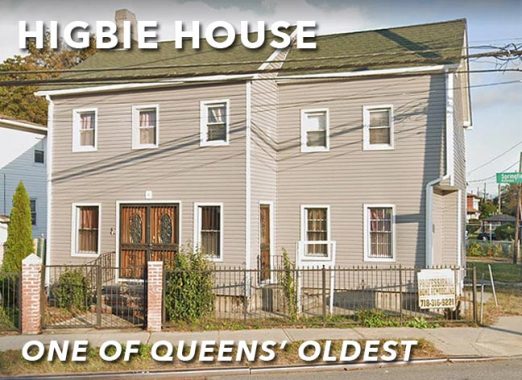In Queens, Springfield Boulevard and Springfield Gardens are a bit misunderstood. The belief persists that the Springfields in these names originated from when Creedmoor State Hospital was a rifle range, and they’re named for the Springfield rifle, which was developed at the US Armory in Springfield, Massachusetts that was founded in 1794 and closed in 1968. It’s easy to make that assumption because there are still a number of streets in Bellerose, near the former rifle range, that still carry weapons-oriented names such as Sabre, Musket, Range, and even historical names such as Gettysburg.
However, Springfield in Queens preceded the rifle range, the Civil War, and even the American Revolution. The small town in southeast Queens was founded as early as the 1670s along what were then known as Springfield and Merrick Roads, which may have originated as Native American trails. One of Queens’ oldest cemeteries, Old Springfield, is contained within the larger Montefiore Cemetery, which was established later; it can be entered at Springfield Boulevard and 122nd Avenue, and you can still find tombstones from the 1700s there.

The Higby, or Higbie, family was one of the early settlers in Springfield. Captain Edward Higby arrived as early as the mid-1700s, and obtained several acres in the area. The family ran sawmills and gristmills in Cornell’s Pond, now located within Brookville Park.
This house at #141-31 Springfield Boulevard at 141st Road doesn’t appear particularly old and has been recently re-sided. However, property records show that Samuel Higbie built the house in 1770. For most of its existence, the house was unphotographed, but I happen to have a couple of photos of the building in the 20th Century and you can see how much it’s changed over the years.

Here’s what the Higbie house looked like in 1940, from the NYC Municipal Archives. There’s a lot going on here. The wraparound porch is long gone. That year, the house had a general store on the ground floor and a Pepsi-Cola distributor paid to have plenty of ads festooning the exterior.
Look closely, and you can see a pole-mounted mailbox on the left. The last of these finally vanished from the NYC scene between 2000-2005. On the pole you can see old street signs and an incandescent radial wave streetlamp. Since 1940, Springfield Boulevard has been widened and it was necessary to remove the porce and move the house back several feet.
Forgive me — instead of firing up the scanner, I decided to save myself some work by taking an IPhone shot of the Higbie house as it appears in the late Vincent Seyfried and William Asedorian’s Old Queens, NY In Early Photographs, a Bible of sorts for amateur historians such as myself.
The mailbox is still present but the porch is gone, to be replaced by a picket fence. Today, a metal gate marks the edge of the property line. Some additions have been made to the building to make it larger, and as stated, it’s been recently re-sided.
Since 1927, the name “Springfield” has fallen out of favor as the entire neighborhood took on the name “Springfield Gardens.” But, Springfield Gardens was originally the name of a development founded in 1906 by Sherwood and Milnor between two branches of the Long Island Rail Road. Though the development is no longer exclusive, it can still be discerned by curving, malled streets that have names like Eastgate and Southgate Plazas and Westgate Street.
One of the other streets that was developed at this time was Higbie Avenue, named for the prominent local family. in the 1920s, it was renamed 140th Avenue. On this map from 1909, I’ve circled the location of the Higbie House (lower right) and the Higbie Avenue Long Island Rail Road station.
The Long Island Rail Road has a lengthy history in Springfield Gardens. The South Side Railroad of Long Island established a station in Springfield near Springfield Road and the present 140th Avenue in 1867, and it was maintained after the SSRLI was acquired by the LIRR. In 1905, the tracks were electrified and a new Higbie Avenue station, which consisted of a “shack by the tracks” was established the following year. The station served Far Rockaway and Rockaway Beach (until the track fire in 1950 eliminated service crossing Jamaica Bay) trains. When the grade crossing was eliminated and the new overpass built, the Higbie Avenue station finally closed in February 1960.
In the above photo, the station would have been located in the clump of trees to the left of the overpass here at the intersection of Edgewood Avenue (foreground) and 140th Avenue.
Check out the ForgottenBook, take a look at the gift shop, and as always, “comment…as you see fit.”
2/16/21
